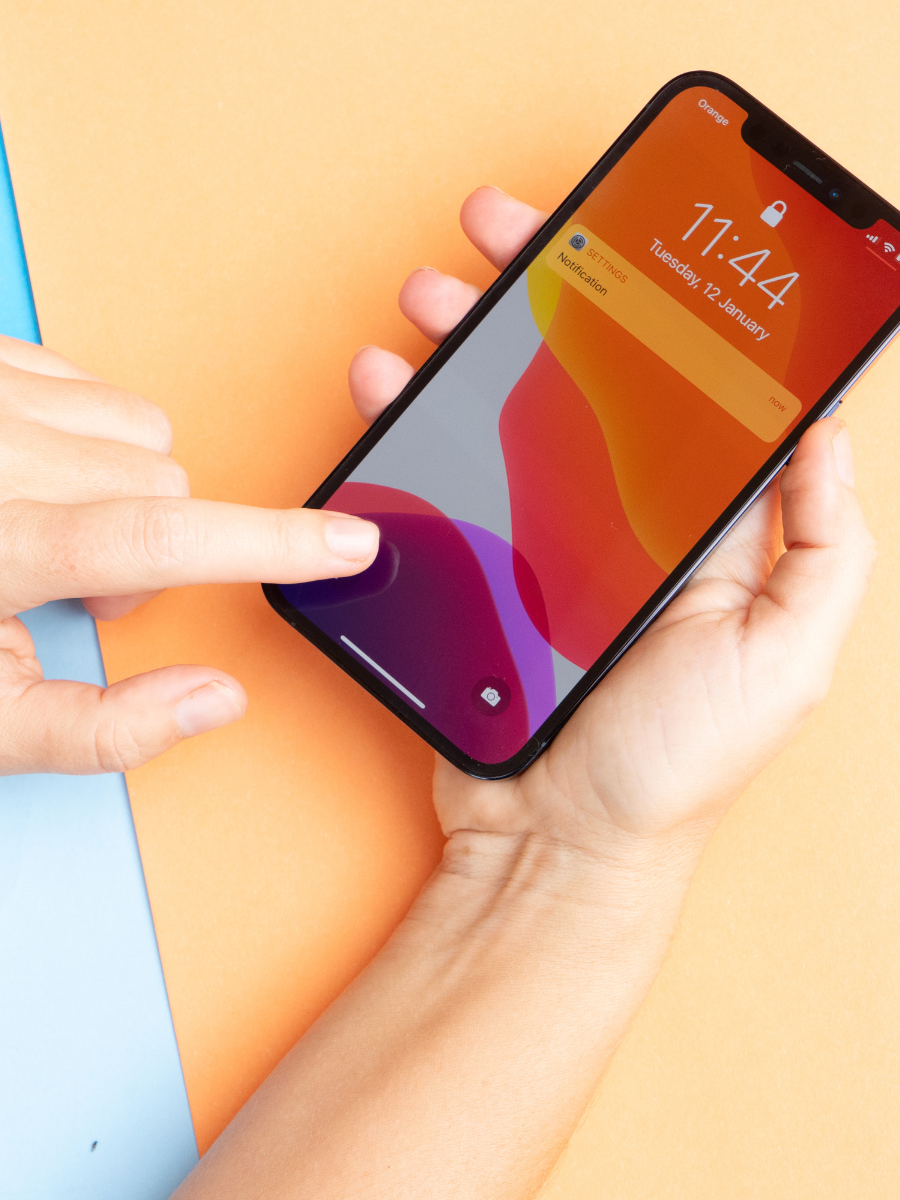We’ve already talked about what to do when there’s an issue with your notifications and how to Master Notifications on iPhone Like a Pro. But what if the issue is not just notifications? What if there’s something else wrong with your phone?
You’ve probably faced one of those scenarios at least once with your iPhone. Your phone might have glitched out of nowhere, or maybe you faced a connection issue while trying to scroll on your Instagram feed. Maybe it suddenly froze while using it, and the only reasonable solution you could think of was to restart your iPhone.
Soft resetting , or turning your phone off and on again, is a very simple yet very powerful process. Even Apple itself suggests this small troubleshooting move for a lot of cases. It’s quite precise and includes beautiful hardware choreography that can solve dozens of issues—if you do it right.
In this article, we’ll learn more about how restarting your iPhone works, the correct sequence for your specific iPhone, and the critical moments when soft resetting can turn a small glitch into a major problem.
Table of Contents
TL;DR
Different iPhone generations require specific button sequences and timing - iPhone 8 and earlier use home + power buttons, while iPhone X through 14+ and beyond use the three-button volume-side sequence.
The Power Management Unit acts as the final decision-maker during resets, sometimes overriding the main processor to protect your device's hardware integrity
Soft resets can actually create more problems when performed below 30% battery, during extreme phone temps, or during active iCloud syncing, turning simple fixes into complex boot loops.
The Hardware Choreography: What Really Happens During Those Button Combinations

When you force restart your iPhone, you typically press some buttons in a specific sequence to trigger a soft reset. In the background, there is a low-level hardware signal that tells your iPhone to shut down and reboot safely.
If your phone is frozen, this can still work because these combinations actually act like a hardware-level interrupt that bypasses the frozen operating system. And yup, it’s perfectly safe.
Different iPhone generations need different button combos for this reboot because the hardware design has evolved over time. And during this process, your iPhone runs system and hardware checks, like verifying the battery and thermal state, to make sure it’s safe to start up again.
Why the Button Combos Changed
You know what’s kind of interesting? The way Apple changes its button combos for resets actually shows how their design and hardware have evolved.
When they ditched the physical Home button and switched to gestures, it wasn’t just about making things look sleek — it changed how the phone handles stuff like input and what happens when you need to force a restart.
Each iPhone generation has its own reset combo because they’ve tweaked things to make it easy for us but harder to trigger by accident. The move from simple two-button presses to the more deliberate three-button combo is part of that — you really have to mean it.
iPhone 8 and Earlier: How to Reset iPhones with a Home Button
The Home button plus Power button combo was the classic iPhone troubleshooting move for almost a decade. That two-button press needed just the right timing, which made it feel like a little ritual. The physical Home button’s click gave real tactile feedback, so the whole process felt more concrete and under your control.
Steps for iPhone 8 and Earlier:
Press and hold both the power button and home button simultaneously
Continue holding for 10-15 seconds (ignore the "slide to power off" screen)
Release when you see the Apple logo appear
Wait 30-60 seconds for a complete boot sequence
Lots of people still think this was the ‘real’ way to reset an iPhone, and that the new combos are a bit overcomplicated. The 10–15 second hold time helped avoid accidental resets but gave you a little wiggle room if your timing wasn’t perfect. And remember that ‘slide to power off’ screen? People learned to just keep holding those buttons until the phone actually restarted.
Needing to press two buttons at once made the whole thing feel more deliberate and memorable, too — definitely more than a single tap would have.
iPhone X and Beyond: How to Reset Modern iPhones (X and Newer)
When Apple got rid of the physical Home button starting with the iPhone X, they had to rethink how a force restart on iPhone would work. Instead of the old two-button press, we got that now-familiar three-step combo.
Steps for iPhone X and Beyond:
Quickly press and release the volume up button
Quickly press and release the volume down button
Press and hold the side button until the Apple logo appears (typically 10-15 seconds)
Release and wait for the restart to complete
At first, a lot of people found this new rhythm confusing — since it’s not just pressing everything at once anymore. But that quick-quick-hold sequence actually makes sense: it’s designed to be deliberate so you don’t accidentally restart your iPhone while adjusting the volume.
Plus, the side button does way more now than just lock your screen — it handles Siri, Apple Pay, and Emergency SOS, too — so having a more intentional reset method helps keep everything separate.
The timing between the button presses is tight enough to confirm you really mean it, and that final long hold makes sure your phone recognizes the full sequence. Apple doesn’t share the exact time windows, but it’s just long enough to prevent accidental restarts and keep the process safe.
What Happens Inside Your iPhone During a Reset

When you do a soft reset, your iPhone’s Power Management Unit is the boss behind the scenes. It figures out what needs to shut down, what should stay running, and in what order, so everything comes back up safely.
The memory controllers and sensors jump in at lightning speed, running a bunch of safety checks in microseconds. And even when your phone looks ‘off,’ parts like battery protection are still awake in the background, just to keep things safe. So next time you reboot, remember: it’s not just a flick of the switch — it’s a quick little team effort to get you up and running again.
The Power Management Unit's Executive Decision
Think of the Power Management Unit as the behind-the-scenes boss when you force restart your iPhone. Even if your phone’s totally frozen, the PMU can override the main processor and say, ‘Alright, we’re shutting this down safely.’ It works on its own, making split-second calls to power down each part in just the right order. It’s a clever bit of protection that keeps your hardware safe.
Fun fact — stuff like battery charge or heat levels can slightly affect how smoothly your reset goes, so sometimes the same button combo feels a bit different. But either way, that tiny chip’s got your back when your phone acts up.
Memory State Preservation vs. Purging
So, ever notice how your phone feels weird or slow, and you’re like, ‘Okay, let’s just restart this thing’ — and boom, suddenly it feels fine again? This process makes it dump whatever junk it doesn’t really need and hangs onto the important bits. That’s why sometimes your apps open right where you left them — and sometimes they don’t, which is kinda annoying but normal. It’s just your phone trying to keep itself running smoothly, honestly. Weird how pushing a few buttons makes it feel brand new again, huh?
The Timing Paradox: When Soft Resets Become Hard Problems
I think I might have some bad news for you!
We already know that a soft reset sometimes doesn't fix the issue. We also know that it’s.. Safe?

Well, it issafe, but here’s the catch: it can sometimes cause more problems than it solves.
So, here’s the deal — a soft reset is usually fine, but it’s not always perfect. If your battery’s super low or your phone’s really hot, or it’s running a bunch of stuff in the background, that same restart that works great today could make things worse tomorrow. It’s kinda weird, but the timing matters. Like, if you reset during an update or something important, it might mess things up and even get your phone stuck in a boot loop. So yeah — it’s worth knowing when to reset, but also when to just wait, plug in, or let your phone chill for a bit.
Now, I know I said the system does some checks first before making sure it’s safe to reboot, but it can’t magically fix bad conditions like a nearly dead battery or an overheated phone. Those checks can only stop a restart if it’s truly unsafe, but they can’t charge your battery or cool things down for you — so it’s on you to make sure your phone’s in a good state before you even press those buttons.
Let’s go deeper into this:
The 30% Battery Danger Zone
If your battery level’s below 30%, you might want to take a rain check on that reboot. Why? Well, it could actually backfire.
The restarting process needs a quick burst of extra power — and 30% isn’t always enough juice, especially if your battery’s a bit old. So if your iPhone’s under 30%, you might end up stuck in a boot loop and need to plug it in just to get things going again. It’s safer to charge it up a bit first before forcing a restart — just in case.
The False Low Battery Loop
You know what’s sneaky? Sometimes your iPhone says you’ve got, like, 20-30% battery left — but the actual battery voltage is too low to finish a full restart.
So you press those buttons, hoping for a quick fix, and end up stuck in a boot loop because the phone can’t get enough power to finish booting. It happens more often if your battery’s a bit old or if it’s freezing cold out. Usually, you can fix it by just letting the battery drain all the way and then giving it a good, long charge to help the phone figure out its real power level again. So yeah — before you panic, try charging it up. Nine times out of ten, you don’t need to run to a repair shop for this.
Emergency Power Reserve Protocols
Want to know a fun fact?
Your iPhone battery actually keeps a tiny ‘hidden’ bit of power even when it says 0%. It’s there to protect the battery from damage, and sometimes to keep basic safety functions working for a bit.
We don't want to risk that, though. If your phone’s nearly dead and you force a restart, you can run into trouble, like a failed boot. Luckily, once you plug it in, that reserve resets too, so you’re back in business.
Temperature-Based Reset Failures
Ever tried to soft reset your iPhone when it’s scorching hot or freezing cold and it just… ignores you?
That’s not your iPhone being broken — it’s actually protecting itself. Extreme temperatures mess with battery chemistry and hardware. In this case, your phone’s safety system might block a reset until things cool down (or warm up).
It might be frustrating, but it's also smart. Just take it easy and give it a bit of time before trying to restart your iPhone.

The App State Corruption Cascade
Sometimes it’s not even your phone’s hardware that causes trouble — it’s the apps you’ve got running in the background.
If you’ve got something frozen or syncing big files when you try a soft reset, it can actually mess up the restart instead of fixing it. I’ve seen people think they’ve solved a glitch, but the same stuck apps just cause more problems right after. It’s rare, but if you ever notice your phone acting weird after a reset, it might be those background processes hanging on for their dear life!
Background Process Stubborn Syndrome
While most apps behave after a reset, some system-level ones — like VPNs or security services — can be a bit trickier. They sometimes restart themselves right after the reboot or keep running in the background in ways you can’t see. Since iPhones don’t give users access to deep diagnostics, it’s hard to tell which app is the troublemaker. So if your phone still feels off even after a reset, it might not be the reset itself — it could be one of those stubborn apps kicking back in the moment your phone powers up.
A simple fix for this is to check for any VPNs, security apps, or other system tools and turn them off before you do a soft reset. If things still feel glitchy afterward, try deleting or updating the app — or reach out to the app’s support for help, since some stubborn processes need more than just a restart to behave.
The iCloud Sync Interrupt Dilemma
Did you ever restart your iPhone while stuff was syncing in the background?
Well, it’s actually not such a great idea!
It might not seem like a big deal, but if iCloud’s in the middle of uploading, a soft reset can really mess things up. You could end up with some annoying complications, like duplicates, missing info, or that weird moment where your phone says one thing and iCloud says another. Even worse? That mix-up can spread to your iPad or Mac if they’re on the same account.
The smarter move is to check if iCloud’s syncing is anything big before hitting those buttons — it saves you a headache later on.
Protecting Your Investment During Critical Moments
When your iPhone’s acting up and you’re mid-reset, it’s usually not your calmest moment. You’re probably juggling button combos and silently hoping the Apple logo shows up fast. But here’s the thing: that’s also when your phone is at its most physically vulnerable. All it takes is one slip during those quick presses or that awkward hold to send your phone tumbling. That’s why having a solid, military-grade case is non-negotiable.
Rokform ’s cases aren’t just bulky armor — they’re built to handle 6-foot drops and still give you the grip and protection you need when things get stressful.
And it’s not just about surviving drops. Our cases are designed with precision in mind. They have precision buttons that are fully machined to keep the tactile feedback sharp, so your reset timing doesn’t get messed up — no more wondering, “Did I press that right?” Some of our cases even come with built-in mounting systems, which means you can keep your phone steady on a desk or stand while you troubleshoot. That little detail goes a long way when you're trying not to drop your phone mid-reset.
If you’re serious about keeping your iPhone safe, a tough case isn’t optional — it’s a must. When you’re pressing buttons, working through resets, or handling unexpected problems, you’ll know your phone can take a hit with our case. That’s one less thing to worry about — and one more way to make sure your quick fix doesn’t turn into an expensive disaster.

Final Thoughts
How to Soft Reset iPhone: The Hardware Secrets Behind Your Most-Used Troubleshooting Move
When you think about it, a simple soft reset is more than just pressing a few buttons — it’s a small but powerful tool that puts you in control of your iPhone’s behavior. Behind those button presses, hidden systems coordinate in split seconds to shut down safely and boot back up — but they need the right conditions to work as intended.
The truth is, sometimes it’s smarter not to reset at all. A low battery, extreme temperatures, or an active iCloud sync can turn a quick fix into a bigger headache. Knowing when to wait — or to try a different approach — can save you from creating new problems.
At the end of the day, knowing when to press those buttons — and when to hold off — puts you in control. With this know-how, you won’t just react when your phone glitches; you’ll handle it smartly. Mastering this simple trick means fewer surprises and a lot less stress the next time your iPhone acts up.
So before you reach for that button combo, run through this quick pre-reset safety checklist to make sure your iPhone’s ready:
☐ Battery level above 30%
☐ Device temperature feels normal (not hot or cold)
☐ No active iCloud sync (check Settings > Apple ID > iCloud)
☐ Close problematic apps manually first
☐ Note the current time for troubleshooting records
☐ Ensure you know the correct button sequence for your iPhone model
And don’t let a simple slip turn into a costly disaster. When you’re troubleshooting or pressing those tricky button combos, Rokform’ s military-grade cases with precision buttons are non-negotiable. We offer rugged and high quality phone accessories that will make sure your phone is always protected. Upgrade to precision-fit, drop-tested protection now — so your iPhone stays safe, no matter what.







